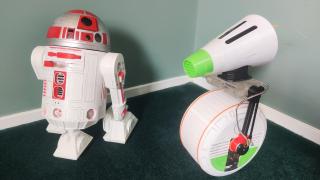Discussion boards, on the other hand, got a pretty consistent thumbs down. Novelli says many students felt like it was “busy work,” and reported “fatigue” with the format, especially when they had several classes using the same discussion board formula. “I think many students’ experience of the discussion boards was that they were going to pick through the thread, look for their opportunity to make a quick comment so they could check that box and move on,” Novelli says. “There was just no way they were going to read through everyone’s comments, especially if they had to do the same thing for three more classes.” Riviere doesn’t think that means we should junk discussion boards as an online learning tool, but it does warrant some rethinking of what exactly we’re trying to achieve. In an in-person class discussion, not everyone is going to speak up and we’d have no problem considering that a successful discussion, Riviere says. “But typically with a discussion board, we’re asking everyone to participate. So do we need to be creating more options for participation? And is some form of watching from the sidelines viable, similar to how some people in an in-person class are going to take in the information just through listening?”
So is this a transformative moment for higher ed?
It’s still early days, but there are some signs that our pandemic experiences could be spurring change in areas of our lives that once seemed pretty durable. (How remote work is changing our ideas of the office is a good example.) So is higher ed heading for a moment of fundamental transformation? Riviere’s take is “we’re about to find out.” But she has her eye on one less talked about aspect of the educational environment in particular: how our physical bodies factor into our learning experiences. She said our struggles to create functional spaces at home to learn or work showed just how much our physical environment matters, and many scholars are doing very interesting research into how taken-for-granted things like that 10-minute walk between classes, or physical interactions with peers in a language class, actually aid learning. This is especially relevant because it could help us sort through this fundamental question of which activities benefit from in-person interactions, and which can be handled remotely or asynchronously.
In the student support resources space, Novelli says he’s hopeful that we’re heading toward an era of more flexibility and informality. “I think it’s a great opportunity for us to meet students where they’re at,” Novelli says. “If it’s not possible for a student to physically come to campus between the hours of 8 a.m. and 5 p.m., I think we should totally have remote options. And even in our office, I personally want it to be more welcoming. Enough of working behind a desk. Let’s work side by side, together, sharing experiences. Our offices should not be intimidating; they should be inviting.”
###
Want more details about students’ experiences during the pandemic? Check out the Hub’s full report from its recent student focus groups.








